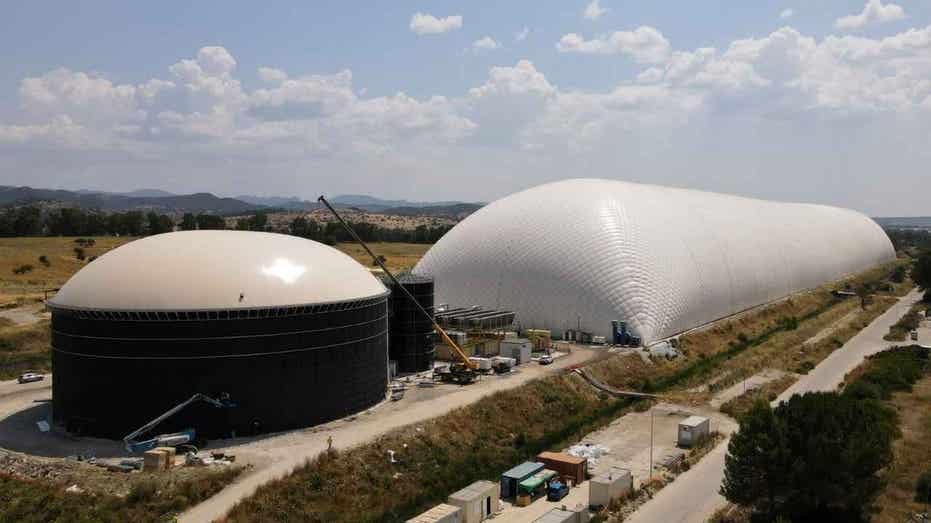Google turns CO2 into battery power for clean energy

Revolutionizing Energy Storage: The Role of Carbon Dioxide in Sustainable Power Solutions
While carbon dioxide is typically associated with climate change and environmental harm, innovative companies are exploring ways to turn this greenhouse gas into a valuable resource. Google has announced a groundbreaking partnership with Italian firm Energy Dome to develop a novel method of storing renewable energy using CO2, promising a new era for clean power.
Expanding Long-Duration Energy Storage Capabilities
This collaboration aims to deploy advanced long-duration energy storage systems, known as LDES, at Google’s renewable energy installations around the world. The core idea is to efficiently store excess energy generated during windy and sunny periods and release it during times of low production, such as overcast days or calm nights.
Traditional batteries typically provide backup power for only about four hours, which may suffice for short-term fluctuations but falls short during extended outages or overnight periods. Energy Dome’s innovative approach offers a significant improvement in reliability and capacity.
The Science Behind the CO2 Battery
Google selected Energy Dome’s CO2 battery technology because it delivers clean, dispatchable energy for up to 24 hours. Unlike conventional lithium-ion batteries, which rely on scarce and often expensive chemical materials, this solution uses readily available mechanical components and fundamental physics principles.
Instead of chemical storage, the system stores energy by compressing carbon dioxide gas into a liquid form. When additional power is needed, the liquid CO2 is heated, causing it to expand back into a gas. This expansion drives a turbine, generating electricity just like steam turbines do. Once the gas cools, it is re-captured in the dome, ready for the next cycle.
How the CO2 Energy Storage Cycle Works
- The system compresses CO2 into a liquid for storage.
- When demand rises, the liquid CO2 is heated and expands into a gas.
- The expanding gas spins a turbine to produce electricity.
- The gas cools and is re-condensed into liquid CO2, completing the closed-loop cycle.
This process offers a highly efficient, environmentally friendly way to balance power supply and demand, smoothing out the variability inherent in renewable sources.
Proven Effectiveness and Real-World Applications
Energy Dome has already demonstrated the viability of this technology with its first commercial facility in Italy, operating successfully for over three years. With a capacity of 20 megawatts and 200 megawatt-hours, the plant showcases how CO2 can be harnessed to make renewable energy more dependable and accessible.
Impacts and Benefits for the Global Energy Landscape
Google’s investment and support could accelerate the widespread adoption of CO2 battery technology worldwide. As wind and solar are becoming more affordable, the challenge remains in storing excess energy for times when production falls short. This innovative storage solution bridges that gap, ensuring a stable and reliable power supply for data centers, communities, and industries.
Another significant advantage is that the spinning machinery within the system adds natural inertia to the power grid, helping stabilize fluctuations—an increasingly critical feature as older fossil fuel plants are phased out and replaced with renewable sources.
Advancing Toward a Carbon-Free Future
By planning to deploy these systems across North America, Europe, and Asia-Pacific, Google aims to achieve its ambitious goal of operating entirely on 24/7 carbon-free energy by 2030. The scalability and affordability of the CO2 battery technology could transform energy infrastructure globally, reducing reliance on fossil fuels and lowering emissions.
Potential for Broader Societal Benefits
As this technology expands, it promises to improve energy security and affordability for communities worldwide. The ability to store renewable energy efficiently means that even in remote or less developed regions, access to reliable electricity can become a reality, supporting economic growth and quality of life.
Addressing the Future of Clean Energy
This innovative approach to energy storage tackles one of the most pressing challenges in renewable power: providing consistent, reliable energy around the clock. By utilizing carbon dioxide in a safe, scalable, and sustainable manner, the new battery model offers a promising pathway toward a cleaner, greener global energy system.
Would you be willing to trust a CO2-powered battery to keep your home lit through the night? Share your thoughts by reaching out through the designated contact channels.



